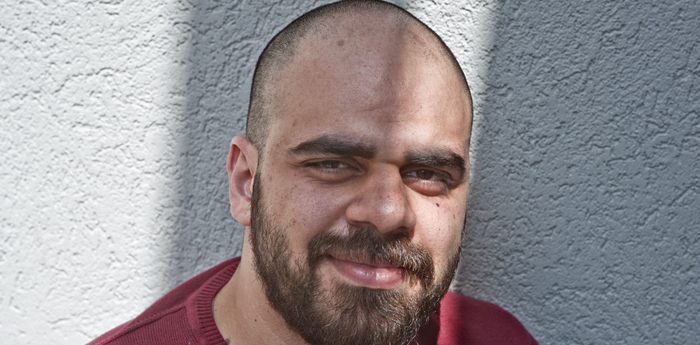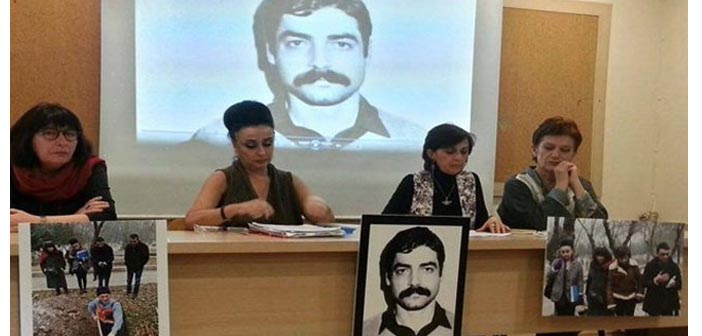Emre Can Dağlıoğlu made a presentation titled as “September 12th Regime and the Re-Shaped Identity of Armenians in Turkey” in “Critical Approaches to Armenian Identity in 21st Century: Vulnerability, Resilience, and Transformation” conference. We talked to him about his presentation and coup’s effects on the Armenian identity.
Emre Can Dağlıoğlu is a PhD candidate in Clark University Research Center for Holocaust and Genocide Studies and he made a presentation titled as “September 12th Regime and the Re-Shaped Identity of Armenians in Turkey” in “Critical Approaches to Armenian Identity in 21st Century: Vulnerability, Resilience, and Transformation” conference. By way of his presentation, we talked about coup’s effects on the Armenian identity; priest Manuel Yergatyan and pastor Hrant Küçükgüzelyan who were detained during the coup regime; Levon Ekmekçiyan, who perpetrated the Esenboğa attack; and Artin Penik, who committed suicide by burning himself in Taksim square for protesting that attack.
Can we say that September 12, 1980 coup is the milestone of the absolute denial of the Armenian Genocide?
Of course the denial of the Armenian Genocide doesn’t start with September 12 coup. Since the establishment of the republic, the state wanted to bury the history. And there is no doubt that this denialism turned the genocide into an endless process. With the coup, the state institutionalized the denialism. In a time when there had been 50th anniversary demonstrations, the killings of ASALA and Justice Commandos of the Armenian Genocide, and the rise of the concept of confrontation in the world, the military coup came to the help of Turkey. According to Güven Gürkan Öztan and Ömer Turan, the official theses of the denial were created by the ministry of foreign affair and universities, consolidated by National Security Committee and popularized by media and ministry of education.
How did the coup change the outlook of the majority of people in Turkey on the Armenian question?
September 12 regime used the Armenians for justifying the coup. Between 1975 and 1980, ASALA and Justice Commandos of the Armenian Genocide carried out more than 70 attacks against their targets in Turkey. And the putschists had been saying that these attacks were made possible by the unqualified political leaders of ‘70s and the anarchists who rendered the state desperate. Kenan Evren had been saying this in many of his speeches. Thus, the military regime means the end of this desperation. In this context, September 12 regime eliminated the historical background of the Armenian question and reduced it to “a current security issue”. During this period, the newspapers often published the photos of the murdered Unionist leaders and Talat Pasha. On the one hand, honor of these people were restored by treating them as martyrs killed without a reason and on the other hand, it was implied that “Armenians have always been violent”. I mean, the whole issue was presented as the following: Armenians perpetrated violence and Turks “rightfully” responded to it, and this is a historical pattern.
How did September 12 coup affect the Armenian identity?
Military regime both suspected and instrumentalized the Armenians in Turkey. “Armenian terror” abroad and Armenian members of the left-wing organizations in Turkey were added to the existent identity policies of the republic. This means that Armenians became the usual suspects more than ever. On the other hand, the state used the Armenians in Turkey as a propaganda tool in the face of the Armenian question. This is a common phenomenon in the history of Turkish republic. However, junta regime took it a step further and integrated the prominent figures in Armenian society into the lobbying activities for Turkey in foreign countries. In 1982, three Armenians were included in the group, which was formed by the ministry of foreign affairs with the purpose of lobbying for Turkey. The common ground of this binary identity was clearly the Armenian Genocide. The state demanded an absolute silence from the Armenian society in terms of the Armenian Genocide. April 24 commemorations abroad had been openly criminalized.
You assess this identity based on which figures?
I assess this period based on 4 Armenians, who were headlined in the newspapers remarkably often. First one is Priest Manuel Yergatyan, a priest from Istanbul assigned by Jerusalem Patriarchate. He was arrested without any legal justification on the charge of making propaganda against Turkey and sentenced to 14 years in prison. He had been subjected to physical and psychological torture. Second one Pastor Hrant Küçükgüzelyan. He had been trying to replant the Armenian culture in the children who came to Istanbul from Anatolia and this effort cost him dearly. He stayed in prison almost for a year and was accused of trying to turn Turkish children into Armenian and communist. The third one is Levon Ekmekçiyan, one of the ASALA militants who perpetrated the Esenboğa Airport attack. State continued to use him as a propaganda tool, even after he was executed by hanging on January 1983. And the last is Artin Penik. 3 days after the Esenboğ attack, he committed suicide by burning himself in Taksim square in order to protest ASALA.
What kind of a part did this new identity play in the stories of these figures?
The different stories of these figures reveal the new boundaries determined for Armenian identity. These boundaries were determined by emphasizing what an Armenian citizen should and should not be. The case of Priest Yergatyan reveals that attending April 24 commemoration is an offense and points out the danger of having strong ties with the Armenian Diaspora. Küçükgüzelyan indicates that the efforts of preserving and promoting Armenian identity are serious crimes in the eyes of the state. Furthermore, it implies that no one should dare to run afoul of the state bureaucracy. And Ekmekçiyan was an intimidation and his case shows that Armenians had been used as propaganda tool in different ways. In and outside the country, the state used him to tell “the real story” behind the Armenian question by using “the Armenian terrorist” narration. And Artin Penik, as a “dead Armenian” was used as a role model for Armenians in Turkey.
Apart from these figures, many other Armenians, who weren’t engaged in politics, had been detained during the same period. In your opinion, what was the reason?
Many people had been detained as part of Manuel Yergatyan case. Priest Yergatyan was detained on the airport, while he was going to Jerusalem with young people who wanted study theology. The justification of his detention was the foreign currency he had; you know, it was prohibited to carry foreign current back then. Afterwards, as Hrant Dink said, they detained everyone involved: the ones who gave that money, the ones who exchanged the money and the ones who advised those students to study in Jerusalem. These people, which were prominent figures in Armenian society, had been subjected to torture for a month. This was done with the purpose of intimidating Armenians, that is for sure. The state implied that if you cross the boundaries determined by the state, you would get into trouble with meaningless accusations. These detained people also became isolated within the society. This indicates that the fear had been deeply rooted in the society. In turn, this harmed the relations within the society. Once, I wanted to talk to one of these detained people. He talked about the pain of being isolated by the society and said that he doesn’t want to talk about it in order not to evoke that pain all over again. Moreover, Yergatyan and the students amount to a relationship between diaspora and Armenians in Turkey. According to coup regime, diaspora was equal to ASALA, which was of course equal to terrorism. A contact with diaspora was turned into an activity to be punished. Thus, the gap between “the Armenians inside” and diaspora made larger.





